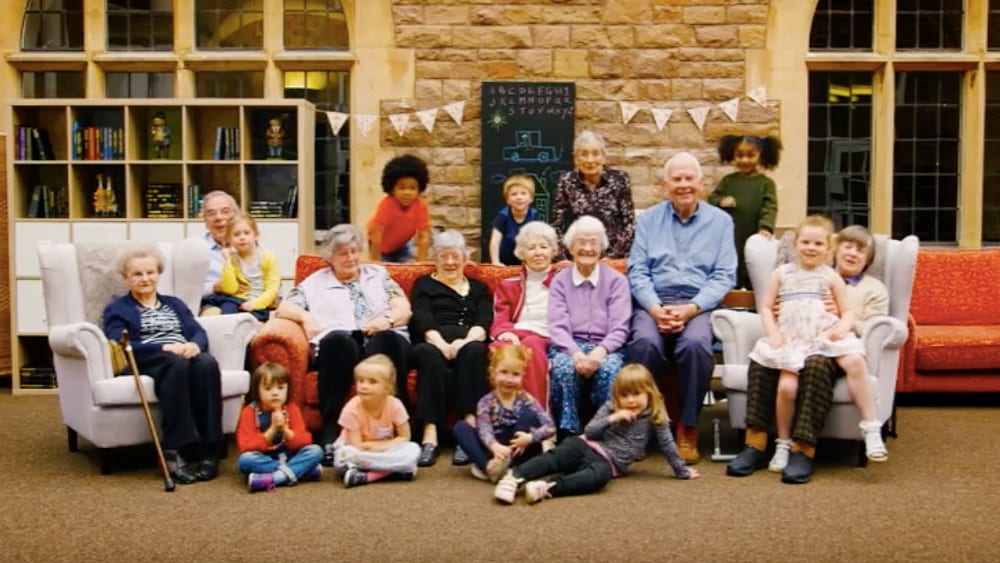
The 2017 UK reality show “Old People’s Home for 4 Year Olds,” it turns out, is more than just a tender-hearted reality show. In fact,what takes place within this UK reality show in a St. Monica Trust home as a significant social experiment. The results are impacting the direction the elderly care industry is taking in order to address the problem of depression and loneliness for residents in retirement communities.
Residents of a Bristol (UK) retirement home were selected to interact with four-year-olds in a six-week program at a retirement community. Although it wasn’t a formal scientific research project, those running the experiment had health care professionals measure each adult participant — beforehand, at three weeks, and at six weeks – for physical abilities, mood and depression, and cognition.
The purpose of bringing together these two sets of individuals, separated by eighty years of life, was to explore how the elderly respond to engaging in daily activities with young children. Ten four-year-olds were taken out of their regular nursery school program for six weeks, coming instead to the retirement community where they teamed up with eleven residents.
Together, each team did arts and crafts; participated in sports and picnics; completed hands-on activities such as beating on pinatas and blowing up balloons; and participated in physical games like “Sleeping Lions.” The residents also got pulled into the kinds of interactions that four-year-olds naturally drag adults into when they want to explore the world around them, such as dashing across the lawn to check out the baby ducklings.
When the six-week experiment was over the elderly participants were measured again for physical abilities, mood and depression and cognition. Here’s what they found:
In essence, the children brought the participants out of their chairs, increased the mobility of overall participants, lifted the spirits of even the most severely depressed individuals, and even attracted the participation of community residents that were not officially part of the program.
There is much to learn from such a social experiment that could decrease the amount of social isolation the elderly experience. It’s reported that that around 60% of nursing home residents never receive visitors.
Not only that, but such positive changes in the elderly participants’ well-being indicate that it’s worthwhile – and even essential – for the elderly care industry to take note. These types of inter-generational programs need to be explored and expanded so that the elderly can continue to benefit from the results, and experience an improvement in their quality of life.
Geriatrician Dr. Zoe Wyrko told Mail Online, emphasised the importance of inter-generationality. “Older people say they feel better when there are younger people around,” the geriatric specialist stated.
So, what is the lasting impact of “Old People’s Home for 4 Year Olds” on elderly care?
The St. Monica administrators have decided to create more opportunities for inter-generational contact – such as establishing a children’s nursery in one of their retirement communities and building play areas at all the St. Monica sites.
These important structural developments will continue to inspire local projects that bring young children and the elderly together, reducing the loneliness and depression that aging and aged individuals face.
What do you have to say? Comment, share and like below.
A beautiful article, thank you for sharing. Having a 4 year old at home I can say they definitely keep you active and young. Such a great idea in the UK. Looks like it was beneficial for both young and old – and a lot of fun too!
5